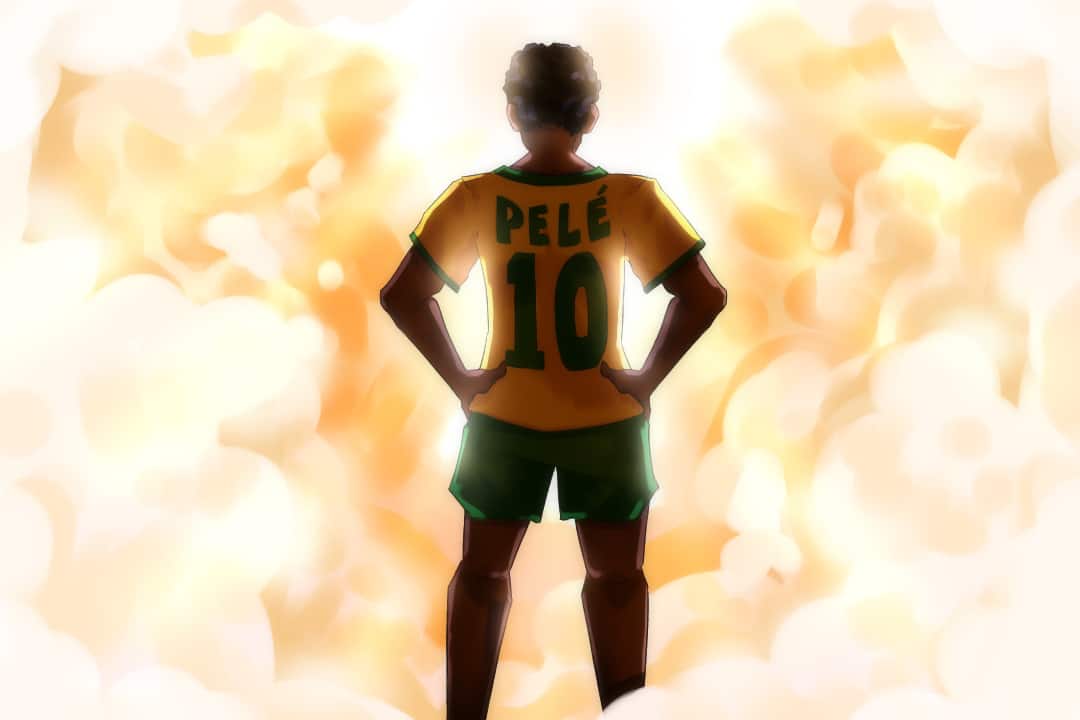On December 29, 2022, Edson Arantes do Nascimento, better known as Pelé, died at the age of 82 after a long struggle with kidney and prostate problems.
Pelé scored a record 1281 goals in 1363 appearances during his soccer career, won the World Cup a record three times, and was named FIFA’s Player of the Century in 2000. As a result, Pelé is widely considered to be one of the greatest soccer players ever.
In an interview with The Varsity, Paul Cohen, an associate professor at the University of Toronto’s Department of History, explained that, “[Pelé’s] accomplishments, goalscoring alone, were unprecedented at the time and by some measures may have not been surpassed.”
Pelé was also impactful with the technical abilities he introduced. “Gestures, like stepovers, feints, the things we associate with more modern players, from Johan Cruyff to Maradona to Messi to Ronaldo were invented really by Pelé,” Cohen explained.
The king of Brazil
Pelé made his debut for Santos Futebol Clube (FC), a Brazilian team based in São Paulo, at the age of 15. “He played his entire career with his Brazilian club, Santos… in an era before games were widely televised,” Cohen said. “[It was] extraordinary that Pelé became globally known.”
At the age of 17, Pelé won his first World Cup in 1958 before winning again in 1962 and 1970. Furthermore, he scored 77 goals for Brazil, making him Brazil’s joint-top scorer — Neymar Jr. joined him at the 2022 World Cup.
Additionally, as a Brazilian of African origin who had a humble upbringing, Pelé was also important off the pitch, bringing pride to Brazil’s diversity. “[He’s] a symbol of Black Brazilian-ness… that was communicated on the world stage,” Cohen explained.
But Pelé did not only play in Brazil — he came out of retirement and played in the United States, joining the New York Cosmos in 1975.
Soccer in America
Soccer was never completely absent in North America. The North American Soccer League (NASL) was created in 1968, and by 1975, the league already had 20 teams with an average attendance of 7,770.
Pelé’s arrival in New York helped develop soccer, but Cohen stresses that he didn’t contribute to the development of soccer in the same way someone like David Beckham did — a superstar player who now owns a team in Miami.
“There [were] already investors who put money in… an effort to build infrastructure to create teams, [and] there [were] already spectators going to see games,” Cohen explained.
Yet, soccer was still not the most popular sport in the USA and Canada — an exception from the rest of the world. The first explanation for this anomaly is that, while soccer was spreading across the world, popular sports already existed in North America, like American football, baseball or hockey.
“The sports landscape was already densely filled… so there was less room for a new sport to move into,” Cohen concluded.
Additionally, soccer was introduced by immigrants who brought their cultures with them. This dynamic presented another challenge to the development of the sport. “In moments of anxiety about immigration, [which] both Canada and America have [a] history with…[soccer] is seen as mildly threatening,” Cohen stated.
Growth by association
Ultimately, Pelé’s role was simple. He helped amplify and market the league, with his style of play and his reputation for popularizing soccer across America. Soccer might not have been very popular, but many Americans recognized the name Pelé. Attendance for Cosmos games increased, while Pele’s debut match had ten million TV viewers — an American record for a soccer game. Additionally, Pelé’s presence brought European superstars to America, like Franz Beckenbauer and Carlos Alberto.
Furthermore, in the North American context, Pelé had other qualities that facilitated his climb to the top. “He was always very careful to be apolitical,” Cohen described. “In a context in which questions of race and racism are present, both in Brazil and the United States, that was an important signal.”
This made him more valuable to an American audience in a period where many Black athletes, like Muhammad Ali, were very vocal on issues surrounding race in America. “There were risks entailed in speaking up,” Cohen suggests. “[Yet], we can find examples of players who speak up politically…and [Pelé] didn’t do that.”
Seeds for the future
In October 1977, Pelé played his farewell match, and in 1985, the NASL suspended operations. Yet soccer did not disappear in North America.
The NASL, and Pelé’s participation, helped soccer become a popular sport across North America. In 1988, FIFA awarded the hosting rights for the 1994 World Cup to the United States, promising the start of another league — Major League Soccer (MLS). Today, with the growing popularity of the MLS and with improved performances from both national teams, soccer has made huge strides in the USA and Canada.
Pelé will forever be a legendary figure across the world. But, specifically, in North America, he contributed to the transformation of “football,” a sport played by immigrants, into “soccer,” a fashionable sport that could stand on its own.


